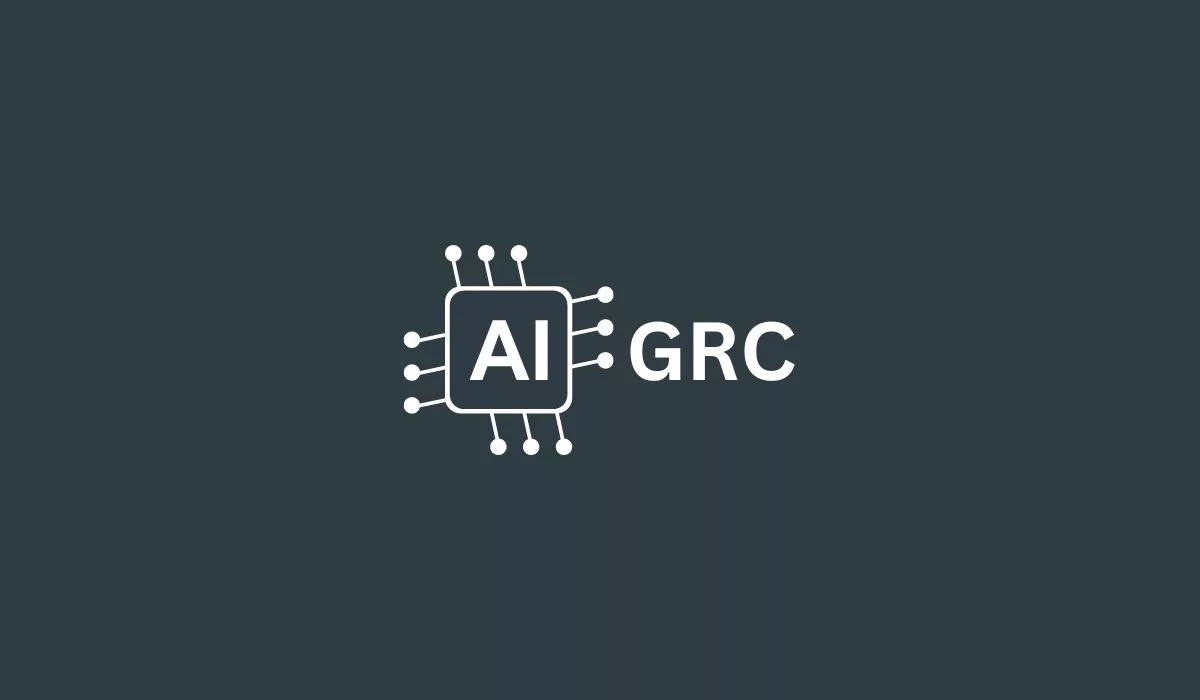In today’s rapidly evolving business landscape, the integration of Artificial Intelligence (AI) technologies has become increasingly pervasive. From healthcare to finance, transportation to retail, AI is reshaping operations and decision-making processes across various industries.
Amidst this digital revolution, the significance of Governance, Risk Management, and Compliance (GRC) cannot be overstated.

GRC frameworks serve as the cornerstone for organizational alignment, risk mitigation, and regulatory adherence, ensuring sustainable business practices and ethical conduct.
Exploring the Anticipated Influence of AI on GRC in 2025
As we venture further into the digital age, the anticipated impact of AI on GRC in 2025 is poised to be transformative. Let’s delve deeper into the role of AI in each component of GRC:
The Role of AI in Governance
AI-Powered Decision-Making:
- AI enables data-driven decision-making, leveraging predictive analytics and machine learning to analyze vast datasets and enhance efficiency and accuracy.
Transparency and Accountability:
- Through advanced data analysis, AI promotes transparency by providing stakeholders with real-time insights into organizational performance and activities.
- AI-powered systems monitor organizational activities, identifying potential compliance issues and enhancing accountability.
Regulatory Compliance Automation:
- AI automates regulatory compliance processes by interpreting legal documents and monitoring organizational activities to ensure adherence to standards and regulations.
Risk Assessment and Management:
- AI facilitates risk assessment and management by analyzing historical data and identifying potential risks and vulnerabilities, enabling proactive mitigation strategies.
AI’s Impact on Risk Management
Risk management is a critical aspect of organizational strategy, focusing on identifying, assessing, and mitigating potential risks to achieve business objectives. In 2025, the integration of Artificial Intelligence (AI) technologies is set to revolutionize risk management practices, offering unprecedented capabilities in risk identification, analysis, and mitigation.
Predictive Analytics:
AI-powered predictive analytics enable organizations to anticipate and mitigate risks before they materialize. By analyzing vast amounts of historical and real-time data, AI algorithms can identify patterns, trends, and anomalies that may indicate emerging risks. This proactive approach allows organizations to implement timely risk mitigation strategies, reducing the likelihood and impact of adverse events.
Real-Time Risk Monitoring:
AI-powered systems provide organizations with real-time risk monitoring capabilities, enabling them to detect and respond to risks as they occur. Through continuous data analysis and monitoring of key risk indicators, AI algorithms can identify potential threats and vulnerabilities in real time, alerting stakeholders to take immediate action. This agility in risk detection and response enhances organizational resilience and minimizes the impact of adverse events on business operations.
Integration in Cybersecurity Strategies:
In an increasingly digital world, cybersecurity risks pose significant threats to organizations’ operations, data, and reputation. AI integration enhances cybersecurity risk management by augmenting traditional security measures with advanced threat detection and response capabilities. AI-powered cybersecurity solutions can analyze network traffic, detect suspicious activities, and identify emerging threats in real time, allowing organizations to proactively defend against cyber attacks and data breaches.
Enhanced Risk Assessment:
AI technologies, such as machine learning and natural language processing, enhance the accuracy and efficiency of risk assessment processes. By automating data collection, analysis, and risk scoring, AI algorithms can assess risks more comprehensively and objectively than traditional methods. This enables organizations to prioritize risks based on their likelihood and potential impact, optimizing resource allocation and risk mitigation efforts.
Scenario Planning and Simulation:
AI enables organizations to conduct scenario planning and simulation exercises to evaluate the potential impact of different risk scenarios on business outcomes. By simulating various risk scenarios and their potential consequences, organizations can develop robust contingency plans and response strategies to mitigate risks effectively. This proactive approach to risk management enhances organizational preparedness and resilience in the face of uncertainty.
AI-Driven Compliance Solutions
Compliance ensures that organizations adhere to regulatory requirements and industry standards. AI-driven compliance solutions in 2025 will revolutionize how organizations meet their compliance obligations by:
Task Automation:
- AI automates compliance tasks, reducing manual efforts and increasing efficiency.
- Natural Language Processing (NLP) interprets legal documents, facilitating compliance with complex regulations.
Regulatory Adherence:
- AI continuously monitors regulatory changes, ensuring compliance with evolving standards.
- Machine learning analyzes historical data to proactively address compliance issues and mitigate risks.
Fraud Detection:
- AI identifies suspicious activities and fraudulent transactions, improving detection accuracy.
- Anomaly detection techniques flag potential fraud indicators in real time, preventing financial losses.
Data Privacy and Security:
- AI enhances data privacy and security by detecting unauthorized access and protecting sensitive information.
- NLP identifies sensitive data, ensuring compliance with data protection regulations like GDPR and CCPA.
Challenges and Considerations
While the integration of AI in GRC brings unprecedented opportunities, it also poses several challenges and considerations:
Ethical Dilemmas:
AI-driven decision-making processes raise ethical concerns regarding biases, fairness, and unintended consequences. Organizations must navigate ethical dilemmas to ensure responsible AI deployment and mitigate potential harm to stakeholders.
Data Privacy and Security Concerns:
AI technologies rely heavily on data, leading to heightened concerns regarding data privacy, security breaches, and misuse of sensitive information. Robust data governance frameworks and privacy-enhancing technologies are essential to address these concerns and build trust among stakeholders.
Continuous Monitoring and Adaptation:
AI systems require continuous monitoring and adaptation to ensure their effectiveness, accuracy, and compliance with evolving regulations and standards. Organizations must invest in ongoing training, auditing, and refinement of AI algorithms to maintain their relevance and mitigate risks associated with outdated or biased models.
Conclusion
In summary, AI technologies are revolutionizing governance practices by enabling data-driven decision-making, transparency, regulatory compliance automation, and effective risk management. By harnessing the power of AI, organizations can enhance their governance frameworks to adapt to the complexities of the modern business landscape. This integration of AI technologies not only improves organizational performance but also fosters greater accountability, integrity, and strategic alignment. As businesses continue to embrace AI, they will be better equipped to navigate challenges, capitalize on opportunities, and drive sustainable growth in an increasingly competitive environment.










Leave a Reply